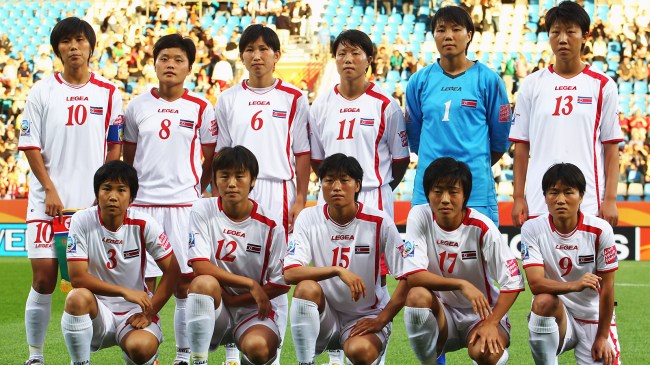
Getty Image
In 1991, FIFA organized what was originally dubbed the “Women’s World Championship,” the inaugural installment of the quadrennial event that would eventually be rebranded as the “Women’s World Cup.”
The United States has been the team to beat since the inception of the Women’s World Cup, as Team USA had secured the trophy on four of the eight occasions it had been held prior to the tournament kicking off in Australia and New Zealand in 2023.
However, the women representing the stars and stripes have faced some stiff competition over the years.
That includes the surprisingly formidable foe they found themselves facing in the form of North Korea in 2007, a squad that was able to punch its ticket to the knockout stage the first year it ever competed in the Women’s World Cup with the help of a widely unlikely 2-2 draw against the U.S. in the group stage.
Germany didn’t have any trouble dispatching North Korea in the quarterfinals that year, but it’s safe to assume the latter’s performance gave players hailing from the authoritarian regime the confidence they could hang on the global stage before they headed to the homeland of the country that eliminated them for the Women’s World Cup in 2011.
However, they instead found themselves embroiled in one of the stranger scandals the event has ever produced.
How a lightning strike and deer musk sparked a bizarre doping scandal involving North Korea at the Women’s World Cup

Getty Image
The United States was able to rebound from its previous performance against North Korea when it opened up its play in Group C with a 2-0 win.
However, following the loss, manager Kwang Min Kim offered a pretty strange explanation for his team’s underwhelming performance when he claimed a number of players were still recovering after they were struck by lightning at their training facility in Pyongyang a few weeks before the contest (which he claimed resulted in the hospitalization of their starting goalkeeper and four defenders and also impacted a few midfielders who were in the area).
It appeared there was no longer any reason to pay attention to North Korea after they found themselves out of contention to advance to the knockout round following their loss to Sweden a few days later, but things took a very interesting twist before they were slated to face off against Colombia in an essentially meaningless match.
On July 7th, FIFA announced defenders Song Jong-Sun and Jong Pok-Sim had been suspended for failing a drug test prior to the start of the game, which led to the governing body opting to test the entire team.
On July 16th, the organization revealed three more players (goalkeeper Hong Myong-Hui, defender Ho Un-Byol, and midfielder Ri Un-Hyan) had also tested positive for a banned substance it positioned as an unspecified steroid, although North Korea claimed the result stemmed from the medicinal deer musk that was used to treat the players who were injured by the lightning strike.
FIFA acknowledged it had no reason to believe North Korea had harnessed a widespread doping program, and when you consider the positions of the players in question line up with the excuse their coach shared following their loss to the United States, it wasn’t actually that far-fetched to assume the deer musk could’ve been the culprit (which seemed to be confirmed by a scientific study exploring the matter).
However, that didn’t stop FIFA from hitting North Korea with a $400,000 fine (the amount it received for its finish in 2007) and banning the team from competing in the Women’s World Cup in 2015.
2011 also marks the last time the country has competed in the event as of this writing, as it failed to qualify in 2019 and declined to participate in the qualifiers that firmed up the slate for 2023.